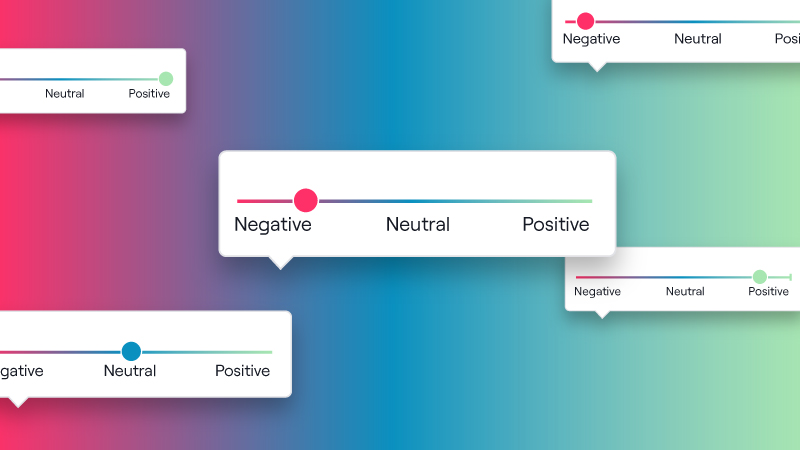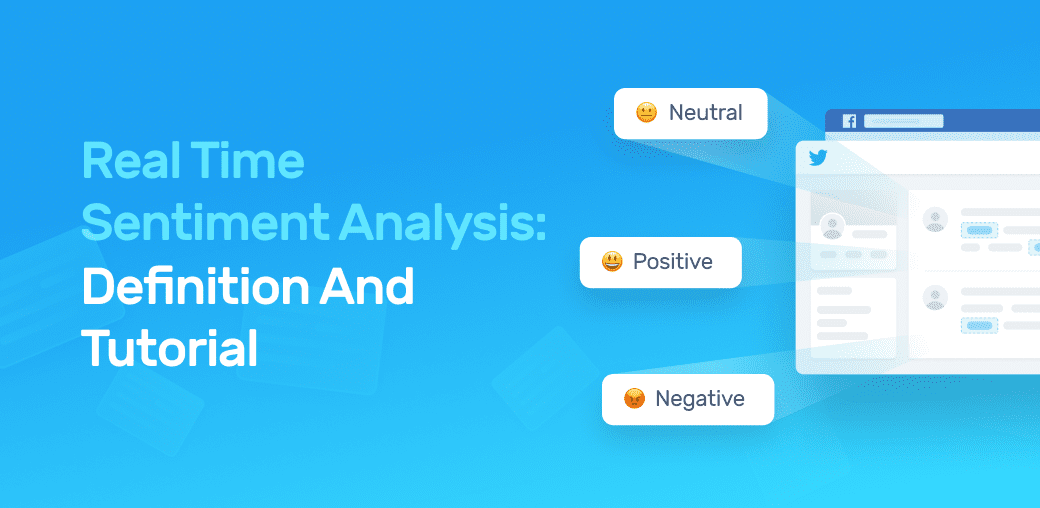In today’s rapidly evolving digital landscape, the ability to understand and analyze human emotions has become more critical than ever. Real-time sentiment analysis, a powerful technique rooted in natural language processing and machine learning, enables us to gauge the feelings and opinions expressed in textual data as they happen. From social media posts and customer reviews to news articles and chat conversations, real-time sentiment analysis provides invaluable insights into public sentiment and perception. In this article, we will delve into real-time sentiment analysis, exploring its applications, methodologies, challenges, and potential benefits.
Introduction to Real-Time Sentiment Analysis

What is Sentiment Analysis?
Sentiment analysis, also known as opinion mining, involves using natural language processing and machine learning techniques to identify and classify emotions, opinions, and attitudes expressed in textual data. It helps us understand whether a given text expresses a positive, negative, or neutral sentiment, providing valuable insights into public perceptions.
The Need for Real-Time Analysis
Real-time sentiment analysis takes sentiment analysis to the next level by analyzing data streams as they are generated. Traditional sentiment analysis often involves analyzing static datasets, which might not capture the dynamic and rapidly changing nature of public sentiment. The real-time analysis allows businesses to respond promptly to emerging trends and take immediate actions based on public opinions.
Methods and Approaches
1. Rule-Based Approaches
Rule-based sentiment analysis involves defining a set of linguistic rules and patterns that help determine sentiment. These rules can be based on the presence of specific keywords, phrases, or grammatical structures associated with different emotions.
2. Machine Learning Models
Machine learning models, such as Support Vector Machines (SVM), Random Forests, and Naive Bayes, learn sentiment patterns from labeled training data. These models then apply their learned knowledge to classify sentiment in new, unseen texts.
3. Deep Learning Techniques
Deep learning techniques, including Recurrent Neural Networks (RNNs) and Transformer models, have shown remarkable performance in sentiment analysis. They can capture complex contextual information and nuances in language, making them well-suited for understanding sentiment in diverse textual data.
Data Collection and Preprocessing
1. Gathering Textual Data Streams
To perform real-time sentiment analysis, a continuous stream of textual data is needed. This can be sourced from social media platforms, news websites, customer reviews, and other text-rich sources.
2. Cleaning and Tokenization
Before analysis, the collected data undergoes preprocessing, which includes removing irrelevant information, special characters, and punctuation. Tokenization breaks down the text into individual words or tokens, making it easier for analysis.
3. Handling Context and Sarcasm
Context and sarcasm can significantly impact sentiment analysis. Real-time analysis methods employ contextual understanding techniques to accurately determine the sentiment behind sarcastic or context-heavy texts.
The Significance of Real-Time Analysis
1. Rapid Response to Trends
Real-time sentiment analysis allows businesses and individuals to identify emerging trends and public reactions as they happen. This enables proactive decision-making and quick responses to both positive and negative developments.
2. Brand Perception Management
Companies can use real-time sentiment analysis to monitor their brand’s reputation and address any negative sentiments promptly. By engaging with customers in real-time, companies can mitigate potential PR crises and maintain a positive image.
3. Predictive Insights
Real-time sentiment analysis can provide predictive insights into consumer behavior and market trends. By understanding public sentiment, businesses can anticipate shifts in demand and tailor their strategies accordingly.
Challenges and Limitations
1. Handling Multilingual Texts
Real-time sentiment analysis faces challenges when dealing with multilingual content. Different languages have unique linguistic nuances, requiring specialized models and data preprocessing techniques.
2. Contextual Ambiguity
Context plays a vital role in sentiment analysis. Words that might be positive in one context can be negative in another. Real-time analysis systems must be designed to understand and interpret contextual cues accurately.
3. Emotion Intensity
Distinguishing between subtly different emotional tones can be challenging. Real-time sentiment analysis struggles to capture the intensity of emotions, leading to potential misinterpretations.
Applications in Various Sectors
1. Social Media Monitoring
Real-time sentiment analysis is widely used for monitoring social media platforms. It helps gauge public reactions to events, products, and campaigns, enabling timely adjustments to marketing strategies.
2. Customer Service Enhancement
Businesses can enhance their customer service by analyzing real-time feedback and sentiment. Promptly addressing customer concerns can improve customer satisfaction and loyalty.
3. Financial Market Predictions
Real-time sentiment analysis has applications in financial markets, where public sentiment can influence stock prices and market trends. Traders and investors use sentiment analysis to make informed decisions.
Ethical Considerations
1. Privacy and Data Protection
Collecting and analyzing real-time textual data raises privacy concerns. Ensuring data anonymization and compliance with data protection regulations is crucial.
2. Bias and Fairness
Real-time sentiment analysis models can inherit biases present in training data. Ensuring fairness and mitigating bias are essential to provide accurate and ethical analyses.
Future Trends and Innovations
1. Integrating Visual and Audio Data
Future developments may involve integrating visual and audio data into sentiment analysis. Analyzing images, videos, and voice recordings can provide a more comprehensive understanding of sentiment.
2. Real-Time Multimodal Analysis
Sentiment analysis could evolve to analyze multiple modes of communication simultaneously, such as text, images, and gestures, enabling a deeper understanding of emotions.
Implementing Real-Time Sentiment Analysis
1. Selecting the Right Tools
Choosing appropriate tools and technologies is crucial for successful sentiment analysis. This includes selecting the right machine learning or deep learning frameworks.
2. Designing a Data Pipeline
Building an efficient data pipeline to collect, preprocess, and analyze data in real-time is essential. This requires a well-architected system capable of handling high data volumes.
3. Continuous Model Training
Sentiment analysis models should be continuously updated and retrained to adapt to evolving language trends and sentiment expressions.
Conclusion
Sentiment analysis has revolutionized how we understand and interact with textual data streams. By providing insights into public sentiment as it happens, businesses, researchers, and individuals can make informed decisions, improve products and services, and gauge the effectiveness of their strategies. As technology continues to advance, the accuracy and capabilities of real-time sentiment analysis will only expand, further bridging the gap between human emotions and digital analytics.
Ready to harness the power of real-time sentiment analysis for your business? Request a demo of cutting-edge sentiment analysis tools and solutions from AIM Technologies!
FAQs
Can real-time sentiment analysis understand sarcasm?
- Yes, modern sentiment analysis models employ contextual understanding to identify and interpret sarcasm accurately.
What industries benefit from sentiment analysis?
- Sentiment analysis benefits industries such as marketing, finance, customer service, and public relations.
Are there privacy concerns associated with real-time data collection?
- Yes, collecting real-time data raises privacy concerns. It’s important to handle data ethically and comply with privacy regulations.
How can biases in sentiment analysis be mitigated?
- Mitigating biases requires diverse and representative training data, along with careful model selection and post-training evaluation.




